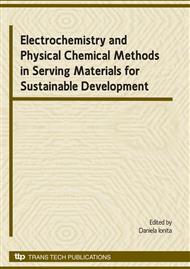p.13
p.17
p.21
p.25
p.29
p.33
p.37
p.41
p.45
Photo-Oxidative Stress on Model Membranes – Studies by Optical Methods
Abstract:
Photophysical studies on oxidative stress induced by illumination with ultraviolet (UV) light from artificial light sources, were performed on small unilamellar liposomes (SUVs) as models of biomembranes. Different liposoluble antioxidants were incorporated in the liposome bilayer during the lipid film preparation. The quercetin containing bilayers exhibited a high tolerance to photooxidative stress. The light-driven reactive oxygen species (ROS) effects on liposomal membranes were monitored by optical methods: UV-VIS absorption, fluorescence and chemiluminescence (CL), exploiting the spectral properties of chlorophyll a (Chla) embedded into some liposome bilayers (Chla/lipid molar ratio = 1/100). The interaction between Chla and the other liposome components resulted in changes in their absorption and emission fluorescence properties.
Info:
Periodical:
Pages:
29-32
Citation:
Online since:
September 2009
Price:
Сopyright:
© 2009 Trans Tech Publications Ltd. All Rights Reserved
Share:
Citation:


